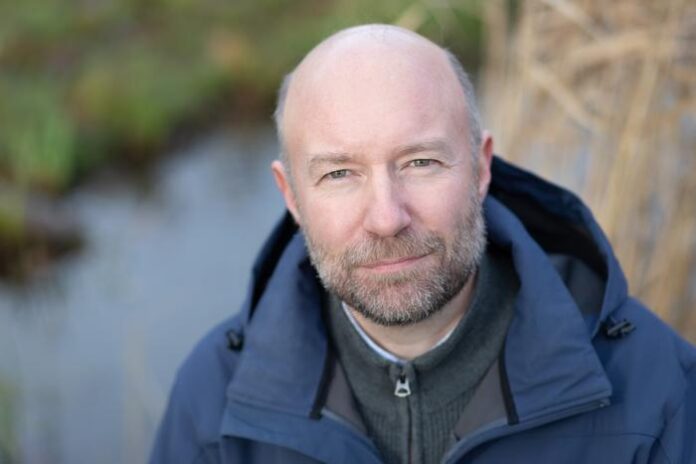Once again, the headlines scream “Worse than we thought.” This time, it’s methane—specifically from lakes and reservoirs—that’s being cast as the next great climate villain. According to a new study from Linköping University in Sweden and NASA Ames Research Center, methane emissions from inland waters could “double by the end of the century” and “exacerbate the IPCC’s worst-case climate scenario”. It sounds dire—until you take a closer look.
First, a little perspective. Methane (CH₄) currently makes up just about 1.9 parts per million of Earth’s atmosphere. That’s less than two-thousandths of a percent—essentially a trace gas. By comparison, carbon dioxide sits above 420 ppm, while water vapor—the dominant greenhouse gas—typically ranges from 10,000 to 40,000 ppm depending on humidity. Yet methane is frequently portrayed in the media as a “super-potent” greenhouse gas, with headlines implying it plays an outsized role in warming. In reality, methane’s total radiative forcing—its contribution to the atmosphere’s energy balance—is small compared to CO₂ and minuscule compared to water vapor. Its concentration has not been rising steadily either; methane levels have gone through periods of stagnation and even decline. Satellite and ice-core data show that from roughly 2000 to 2007, global methane levels were virtually flat. Since then, they’ve increased modestly but not alarmingly. If methane were on an unstoppable trajectory as claimed, we wouldn’t have seen that decade-long pause.
The core of the new study isn’t field observation but modeling. The authors openly describe their work as a “computational simulation” based on IPCC climate scenarios. They built a model using data from 767 sites across various climate zones and extrapolated those results to represent every lake and reservoir on Earth for the next 75 years. That’s an extraordinary leap. Such modeling exercises depend entirely on assumptions—about temperature change, biological response, and feedbacks—that cannot be verified. A model’s output is not data; it’s a hypothesis expressed in numbers. In this case, the model assumes that warming alone drives methane emissions upward in a near-linear fashion. But lake ecosystems are far more complex. Methane formation depends on oxygen availability, nutrient levels, sediment composition, microbial communities, and water depth. Temperature is only one variable among many, and in some systems, higher temperatures can even suppress methane production by increasing oxygen penetration or altering microbial competition.
Real lakes are also dynamic. Their surface temperatures fluctuate with wind, mixing, inflows, shading, and seasonal turnover. A small change in air temperature doesn’t necessarily translate into a proportional rise in sediment temperature where methane is generated. But models tend to smooth over these complexities, turning natural variability into tidy global averages. When that simplification is fed through multiple layers of climate scenario assumptions, it produces numbers that look precise but are, in fact, speculative.
The press release claims that before industrialization, methane emissions were “in balance” with natural breakdown processes and that climate change now threatens to “disturb” that equilibrium. That framing assumes there was ever a fixed baseline. In truth, methane levels have always fluctuated in response to natural factors like rainfall, vegetation shifts, and temperature cycles. Wetlands, lakes, and even termites are major methane sources, and their emissions have varied widely throughout history without any human influence. To describe the system as “out of balance” now is to misunderstand that natural balance is dynamic, not static.
Another red flag is the reliance on what the study itself calls the “IPCC’s warmest scenario”—the one that assumes massive fossil fuel expansion and unchecked emissions through 2100. Even the IPCC has quietly admitted that its so-called “worst case,” now known as SSP5-8.5, represents an implausible path that doesn’t match real-world energy or population trends. Yet that’s the foundation this methane projection stands on. When you start from an exaggerated premise, you end up with an exaggerated conclusion.
It’s also telling that the study was funded by the European Research Council, the Swedish Research Council, and NASA Earth Science programs—institutions that exist within the broader climate research ecosystem where funding and attention flow toward studies emphasizing risk and urgency. “Methane emissions stable” won’t make the news or attract new grants, but “methane doubling—worse than the IPCC’s worst case” certainly will. The incentive structure ensures that speculative modeling studies receive maximum visibility, while measured, data-driven assessments get buried.
And then there’s the rhetoric. The lead researcher is quoted as saying, “This study makes it even clearer that we really, really want to change the climate scenario as quickly as possible.” That isn’t scientific language; it’s advocacy.
Of course, he looks like another Mann clone:
Science should describe what is, not prescribe what society “really, really” must do. When a model becomes a moral argument, the line between empirical research and policy lobbying has been crossed.
In the end, what we have here is not evidence of an impending methane catastrophe but another example of how climate modeling gets presented as certainty. Methane remains a trace gas with a small, transient role in atmospheric heating. Its natural sources and sinks are vast and variable, defying the kind of simplistic modeling that underpins this study. The suggestion that lakes and reservoirs will suddenly double their methane output by 2100 is speculation layered upon speculation.
So when you see headlines warning that “warmer lakes could worsen the IPCC’s worst case,” remember what’s really being described: a model of a model of a model. The numbers aren’t measurements, the future isn’t data, and the atmosphere isn’t listening. Methane may bubble quietly from lakebeds, but the real gas here is the hot air coming from yet another round of climate conjecture dressed up as discovery.
Discover more from Watts Up With That?
Subscribe to get the latest posts sent to your email.
